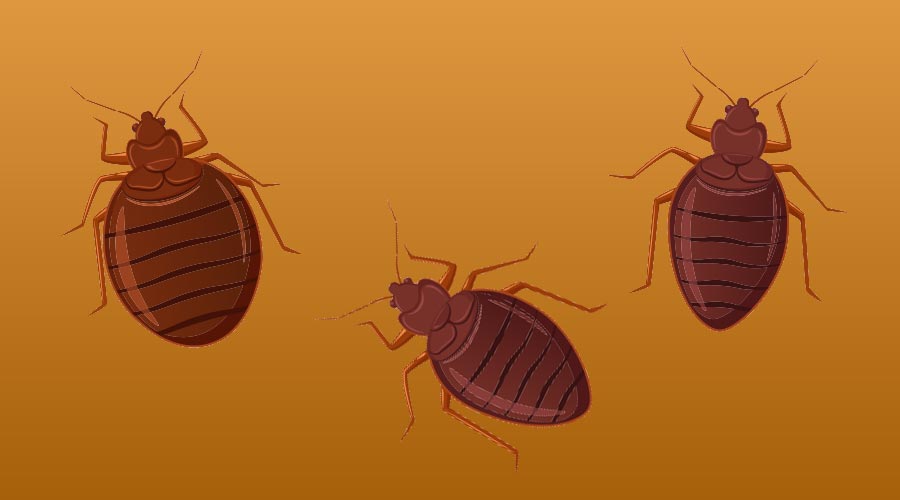
The Windy City is taking up residence as one of the worst cities for bed bugs taking the #1 spot on Orkin’s Top 50 Bed Bug Cities List for the fourth year in a row. Chicago, New York, and Philadelphia hold onto the top three spots, ranking first, second and third, respectively for cities with most bed bugs. Greensboro, N.C. saw the largest jump this year, moving up twenty-fife spots into the Top Twenty, with Milwaukee (#25) moving up the list by fifteen and Tampa (#31) moving up by ten.
Amid the Paris Bed Bug craze, travelers are more concerned than ever with avoiding these stealthy pests. As Americans look towards travel in 2024 it is critical to know how to identify and thoroughly check for bed bugs in hotel rooms (both internationally and domestically) while being careful not to bring the pests home with them.
The bed bug cities list is based on treatment data from the metro areas where Orkin performed the most bed bug treatments from Dec. 1, 2022 – Nov. 30, 2023. The ranking includes both residential and commercial treatments.
1. Chicago
2. New York
3. Philadelphia
4. Cleveland-Akron, Ohio
5. Los Angeles
6. Detroit
7. Washington, D.C. (+2)
8. Indianapolis (-1)
9. Charlotte (+5)
10. Champaign, Illinois (+1)
11. Columbus, Ohio (-1)
12. Cincinnati (+1)
13. Atlanta (+3)
14. Grand Rapids, Michigan (-2)
15. Denver
16. Baltimore (-8)
17. Richmond, Virginia (+9)
18. Greensboro, North Carolina (+25)
19. St. Louis (+6)
20. Youngstown, Ohio (+7)
21. Pittsburgh (-3)
22. Dallas-Ft. Worth, Texas (-5)
23. Flint, Michigan (-2)
24. Raleigh-Durham, North Carolina (-4)
25. Milwaukee (+15)
26. Charleston, West Virginia (-7)
27. Greenville, South Carolina (-3)
28. Norfolk, Virginia (-5)
29. Davenport, Iowa (+8)
30. Nashville, Tennessee (+3)
31. Tampa (+10)
32. Toledo, Ohio (+6)
33. Dayton, Ohio (+1)
34. Knoxville, Tennessee (-4)
35. Las Vegas (new to list)
36. Omaha, Nebraska (-4)
37. South Bend, Indiana (-9)
38. Houston (+6)
39. Cedar Rapids, Michigan (-8)
40. Ft. Wayne, Indiana (-5)
41. San Francisco (-19)
42. Buffalo, New York (-13)
43. Harrisburg, Pennsylvania (-7)
44. Seattle (-5)
45. Miami
46. Orlando (+1)
47. Minneapolis (new to list)
48. Oklahoma City (new to list)
49. Louisville, Kentucky
50. Lexington, Kentucky (-4)
Bed bugs are typically 3/16 inch long, red to dark brown in color and are mostly nocturnal insects that come out of hiding to take blood meals from sleeping humans. These pests are hematophagous, which means blood is their only food source. Clinging to items such as luggage, purses and other personal belongings, bed bugs can travel from place to place with ease.
“Bed bugs are extremely resilient, making them difficult to control. As travel plans ramp up, it’s important that Americans know how to protect themselves through pest identification and proper control,” said Ben Hottel, Orkin entomologist. “While bed bugs are visible to the naked eye, they are excellent at hiding. Involving a trained professional at the sight of a bed bug introduction is recommended.”
Known for rapid population growth, female bed bugs can deposit one to five eggs a day and may lay 200 to 500 eggs in their lifetime. They can survive for several months while waiting for their next blood meal, so they’re likely to emerge the moment a food source, e.g., humans or animals, becomes available.
Check out last year's list along with proactive tips to prevent bed bugs here.

 Celebrating BSCAI's 60th Anniversary eBook
Celebrating BSCAI's 60th Anniversary eBook The Down and Dirty on Cleaning in Virus Season
The Down and Dirty on Cleaning in Virus Season How Surfactant Use is Expanding in Commercial Cleaning
How Surfactant Use is Expanding in Commercial Cleaning